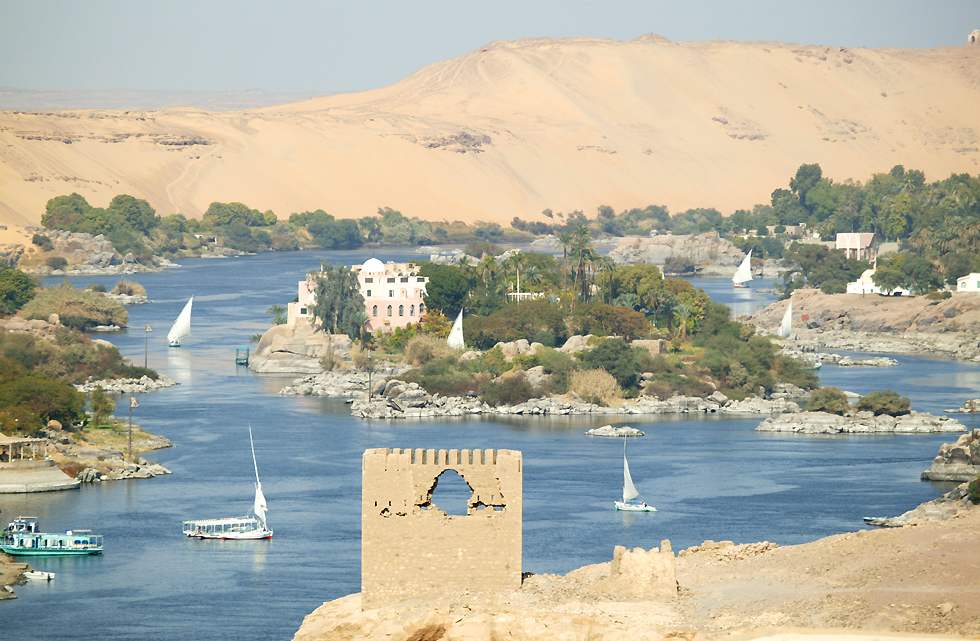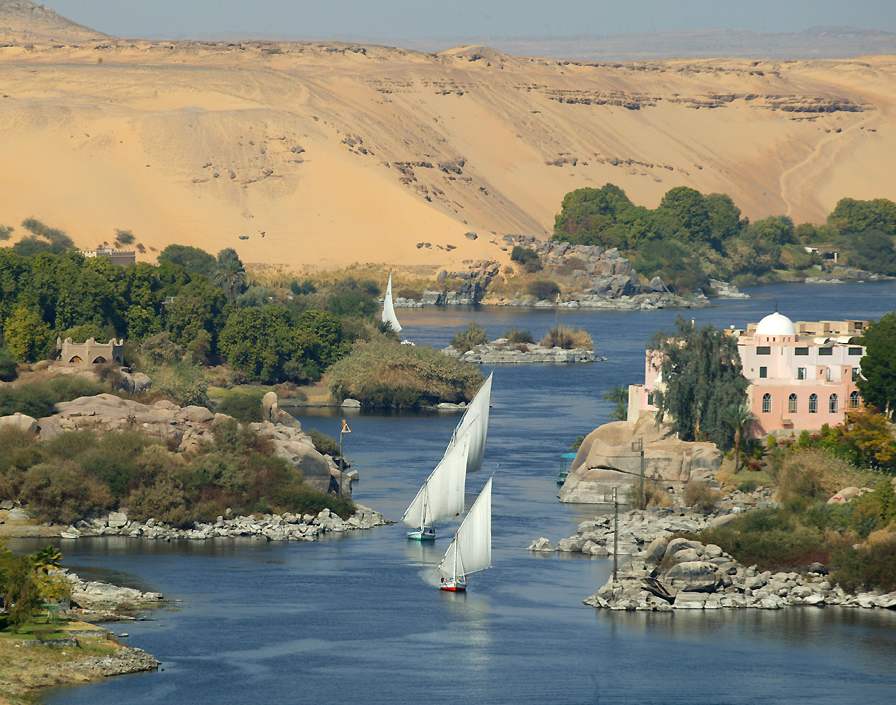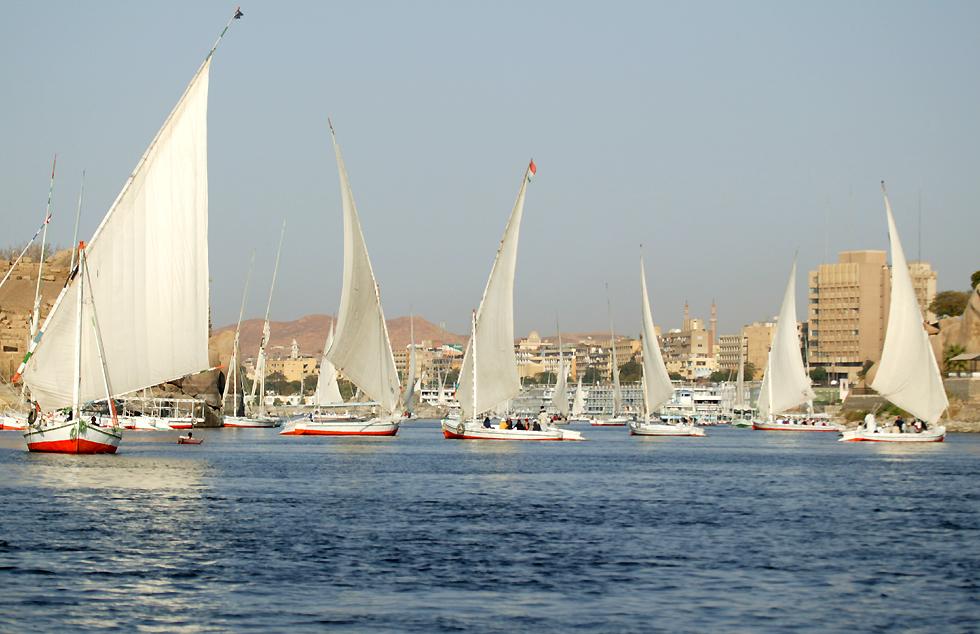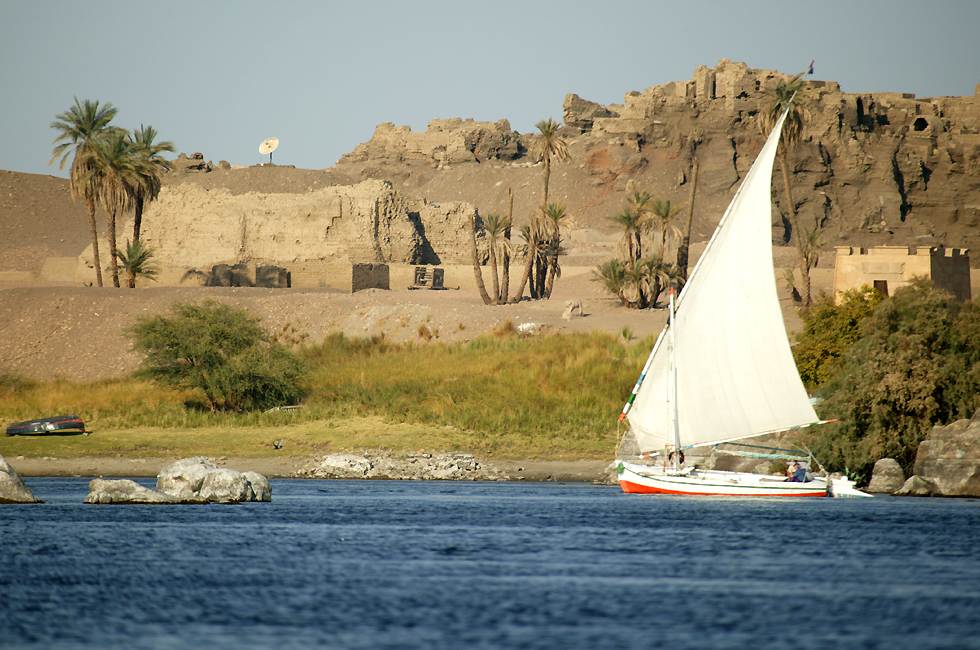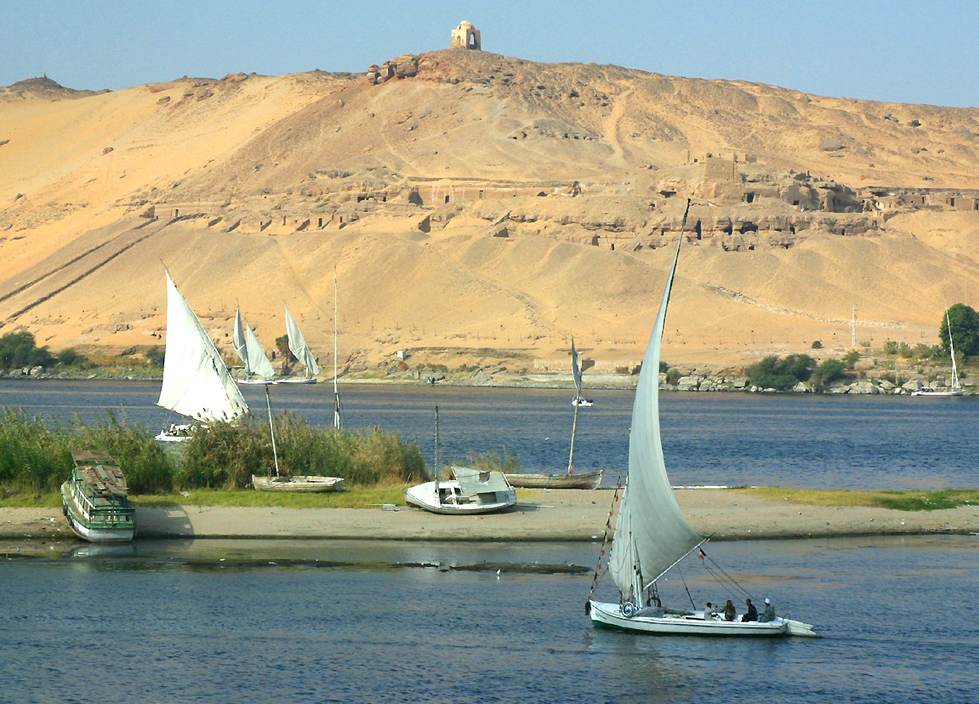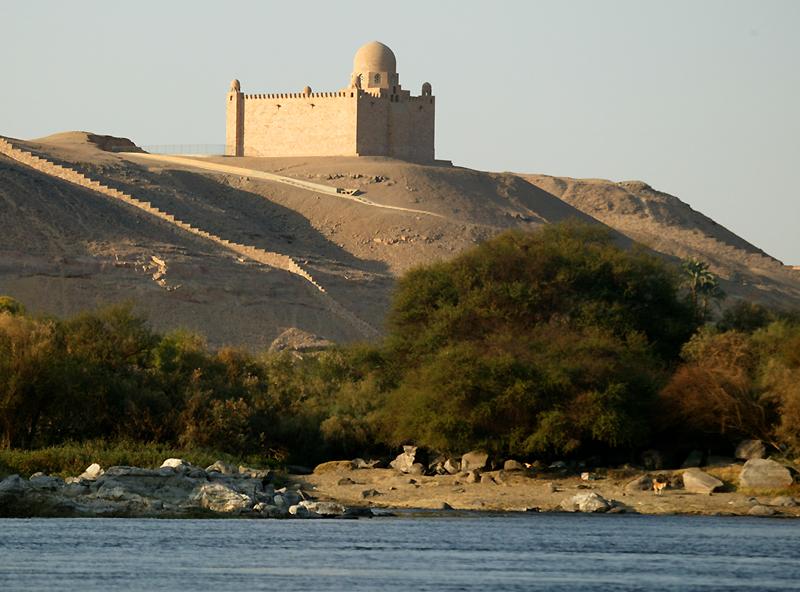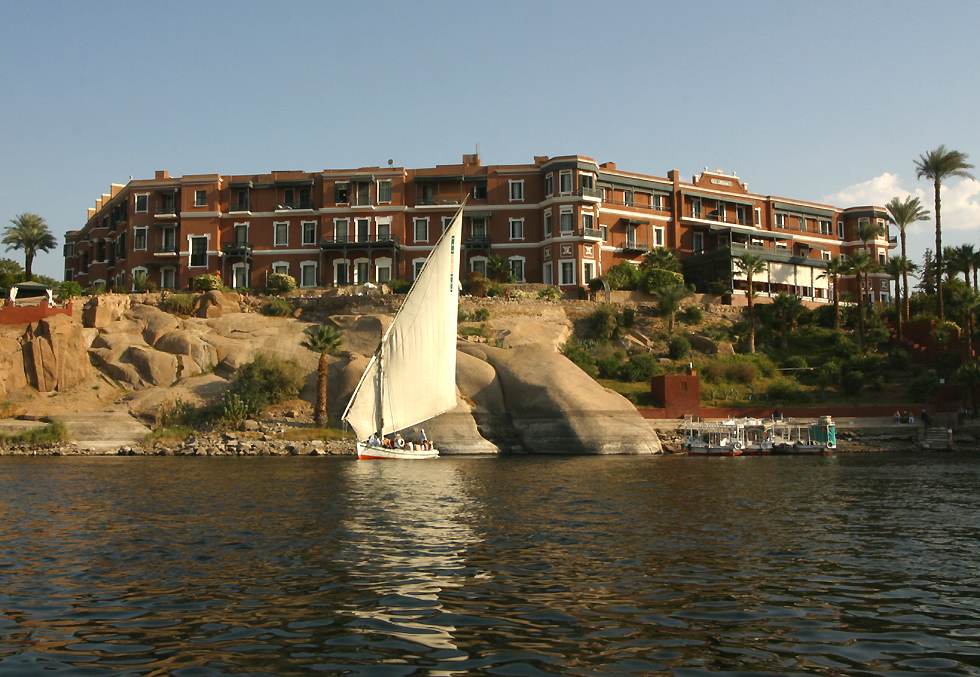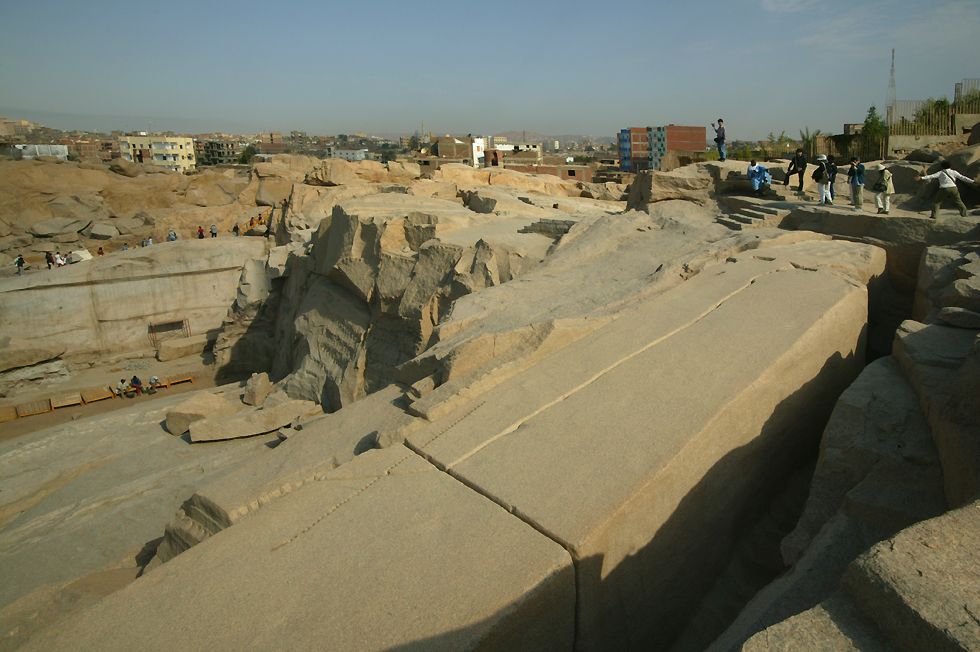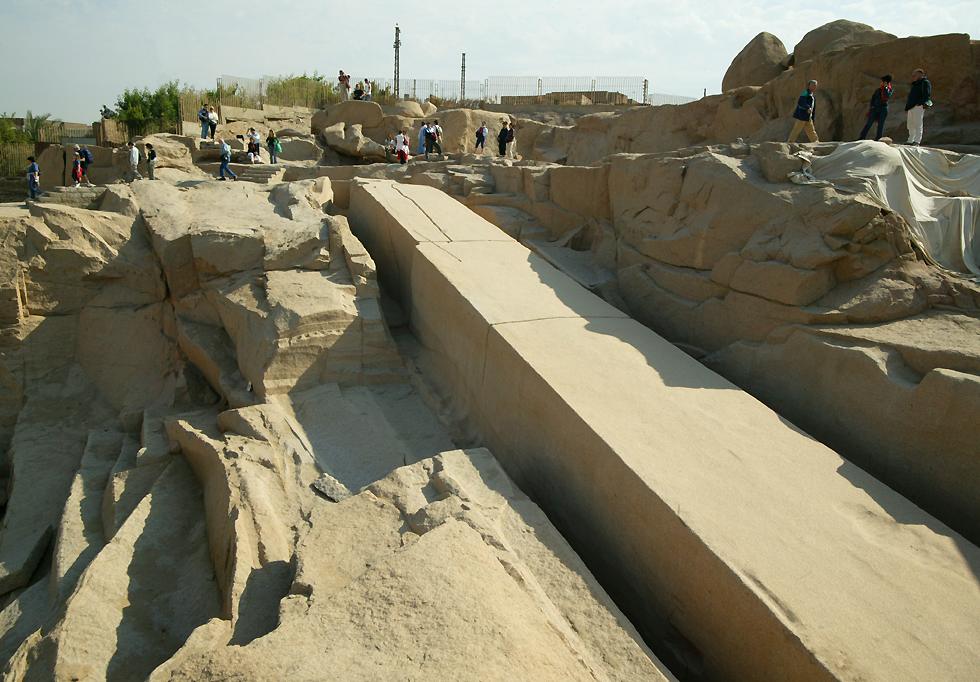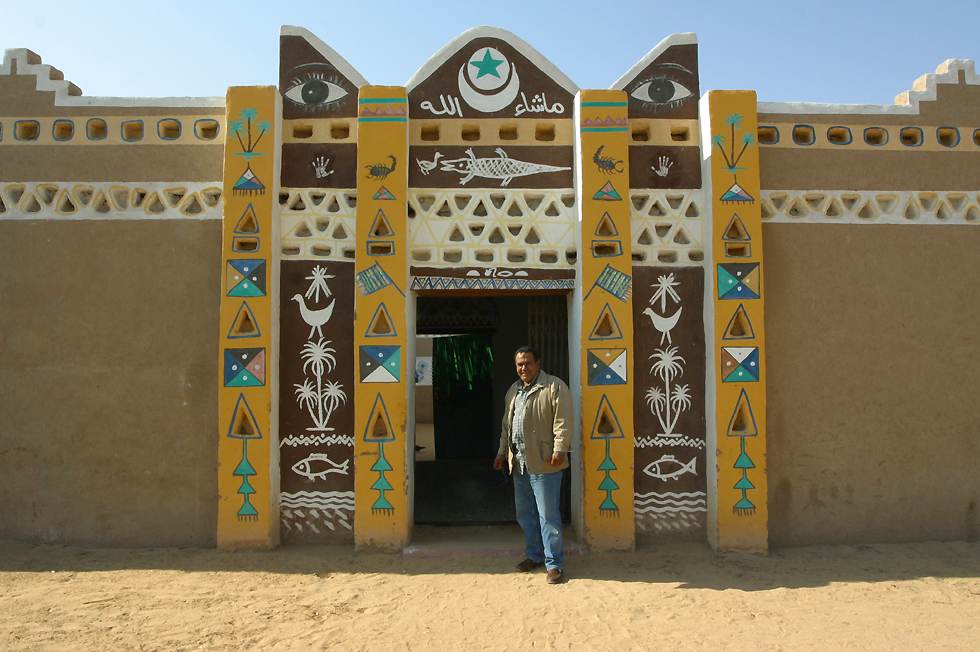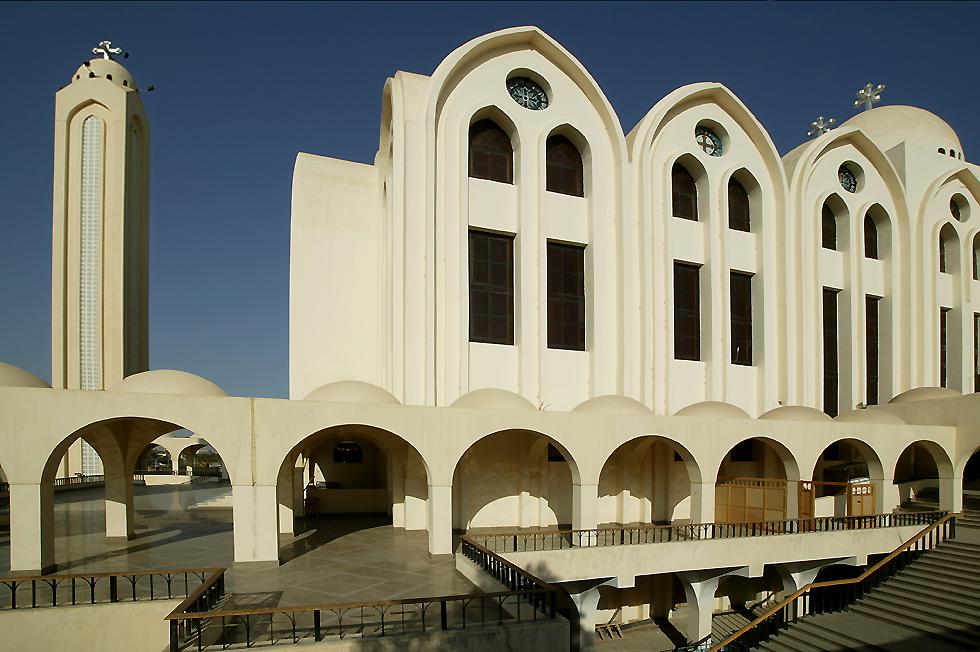Highlights of Aswan
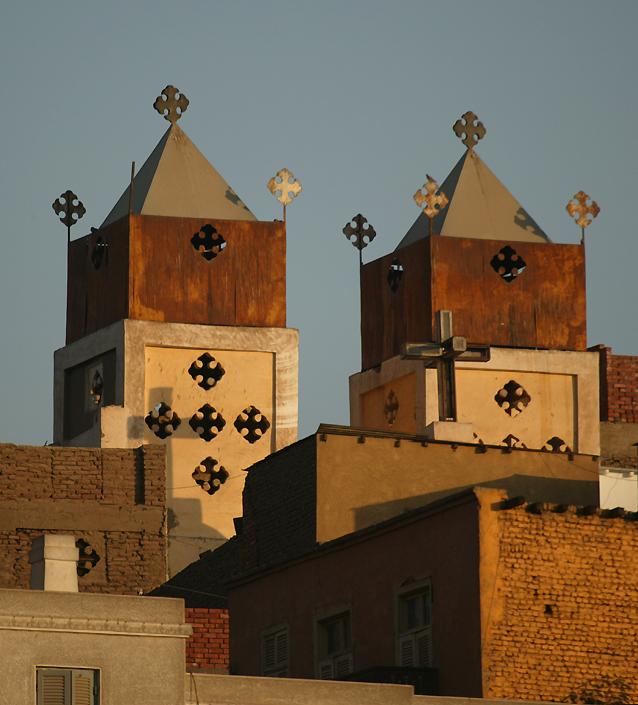
A somewhat less fancy Coptic church nestled amongst the mud brick buildings of Aswan. Crude brick buildings, often with sagging walls or stairways, are a feature of Egyptian architecture all around the country. Small mid-range tourist hotels are often built in this way, with the brickwork nicely tucked away behind plasterwork. With building regulations somewhat loose and always circumventable by the application of a bit of baksheesh, it's no wonder that buildings which have been illegally extended to 6 or 8 stories high periodically collapse. |
| Sunset over the Nile at Aswan, a perfect end to a relaxed day on and around the river. |

|
